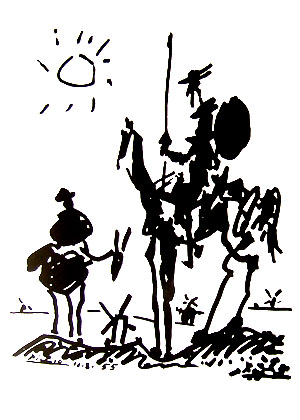Motility Contrasted to Mobility
Motility is movement of the body around a fixed point. (Mobility is movement of a body from point to point). Our culture pays some attention to mobility but ignores motility. Mobility is associated with the will and instrumental action. It is also associated with moving towards or away from something. Motility is associated with just being, rest and relaxation, pleasure, and receptivity. It is motility within mobility that gives movement beauty and grace. What is rarely recognized is that progressive loss of mobility usually involves an earlier loss in motility. Mobility is the 'shell' of a movement, and motility is the guts.
Verticality, Posture, and the Use and Misuse of Gravity
Humans are the only animals that have a fully upright posture. This is a very social and vulnerable position. It also presents unique requirements for the pelvis. The pelvis is critical for balance, alignment, and dynamic movement. Posture is the idea that there is a preferable 'form' in which to stand. Posture is a static concept that does not easily translate to movement.
Verticality is a dynamic concept that translates much more readily to movement. Verticality implies not exactly a preferable 'form' to stand, but rather a harmonious relationship between the skeleton, the muscles, and gravity. It has been said that walking is a controlled fall. All graceful movement is a controlled fall in that gravity is leveraged in some part. Adaptation to gravity can be awkward or graceful.
When there is not good alignment and flexibility in the feet ankles legs and pelvis, (and this tends to be the rule not the exception) there is always present a fear of falling. Fear of falling has far reaching emotional effects of course, but these stem from the physical effects. With fear of falling, all movement is distorted to avoid leveraging gravity. Gravity is fought all the time, which is exhausting.
Graceful movement on the other hand is based on a secure feeling. Graceful movement is pleasureable. This is the experience of children (for the most part). Children often cannot not move. Adults of course must learn to be more judicious in movement, but this does not mean growing out of the pleasure of movement. Traditionally dancing is a form of shared pleasure in movement. In the first half of the twentieth century, community dances were abundant. Perhaps this was a way to provide a shared experience of pleasure for young men and women that didn't involve sexual intercourse, consistent with the mores of the time.
The type of dancing that is prevalent in the second half of the twentieth century and now is more akin to shaking or rocking. This may have a neuro-muscular impetus and benefit, but it also perhaps disguises an increasingly distorted verticality and fear of falling. There is no leading and following and so the pleasure is not shared although there may be pleasure simultaneously with others.
Ida Rolf believed that humans would actually take energy from gravity if the body was oriented to gravity in a correct way. She believed that beliefs about a 'subtle energy body' arose from the experience of effortless and plentiful energy that occurred for some people when excellent-enough alignment happened. Like all phenomena of excellence, this is rare, and scientifically unprovable
Energy Level
Two separate points are to be made about the energy level of a person and the energy level of an activity. A personal high energy level is very different from a high activity level. In fact, frenetic activity almost always speaks to a low energy level and exhaustion. Frenetic activity is high mobility with low motility. It is as if the mobility is being forced to try to fix the low motility. Pleasureable activity always has high motility, but the mobility may vary from laying down to dancing.
A high energy level in a human allows muscles to be relaxed and therefore ready to apply exactly the right amount of force at the right time. There is a feeling of readiness. As for the energy characteristic of an activity, as Fritz Perls has pointed out, all thought (even brilliant thought) and language is low-energy activity, and all physical action is high energy activity. That is why 'thinking ahead' about a big physical or practical activity conserves energy by moving the trial and error phase to mental activity.
However biology, including emotion, seems to flourish when there is sufficient high energy activity in a life. It is beneficial to understand the distinction between high social value, urgency, and high energy in activity, because depression is a disorder of energy, unrelated to the merit of what the person has been doing.
